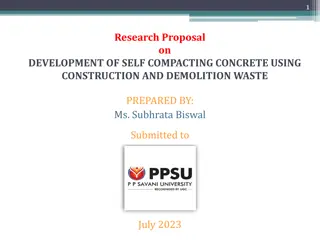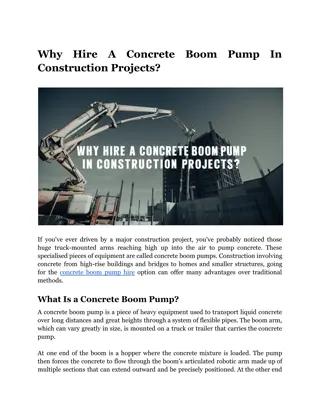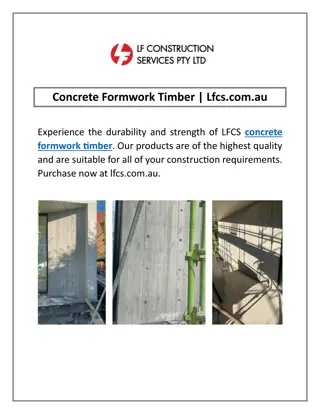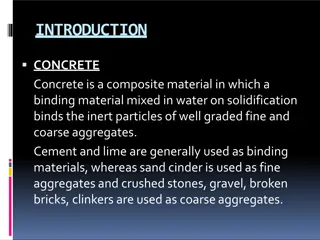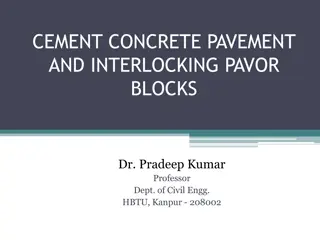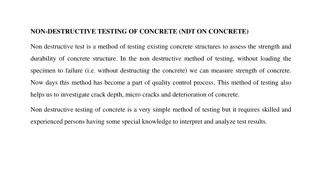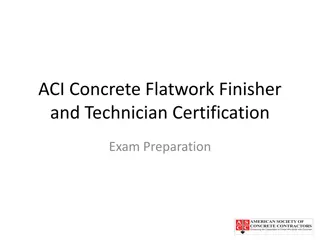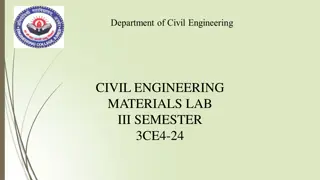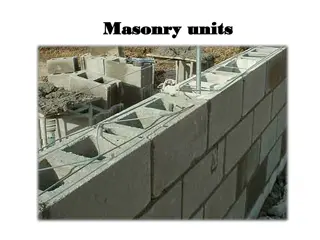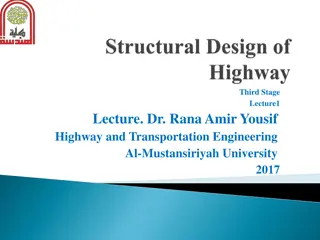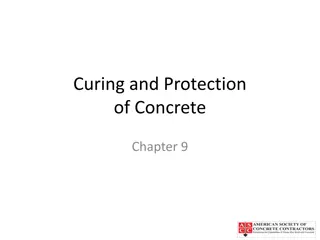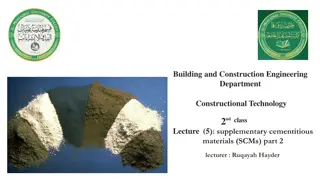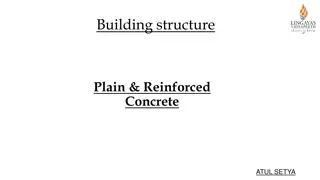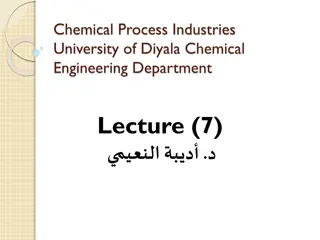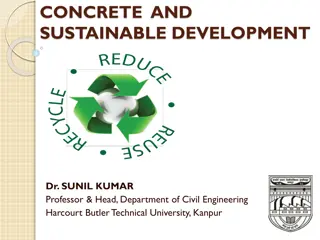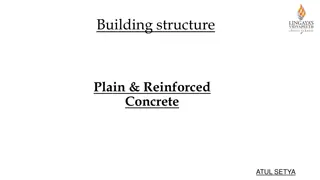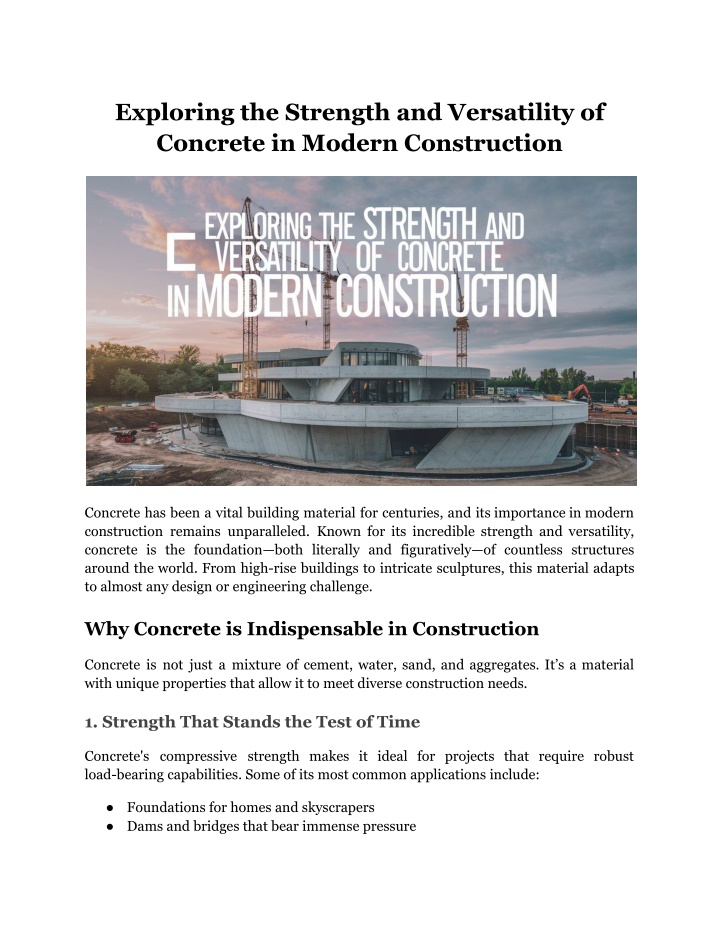
Exploring the Strength and Versatility of Concrete in Modern Construction
Discover why concrete remains a top choice in construction for its unmatched strength, flexibility, and lasting durability
Download Presentation

Please find below an Image/Link to download the presentation.
The content on the website is provided AS IS for your information and personal use only. It may not be sold, licensed, or shared on other websites without obtaining consent from the author. If you encounter any issues during the download, it is possible that the publisher has removed the file from their server.
You are allowed to download the files provided on this website for personal or commercial use, subject to the condition that they are used lawfully. All files are the property of their respective owners.
The content on the website is provided AS IS for your information and personal use only. It may not be sold, licensed, or shared on other websites without obtaining consent from the author.
E N D
Presentation Transcript
Exploring the Strength and Versatility of Concrete in Modern Construction Concrete has been a vital building material for centuries, and its importance in modern construction remains unparalleled. Known for its incredible strength and versatility, concrete is the foundation both literally and figuratively of countless structures around the world. From high-rise buildings to intricate sculptures, this material adapts to almost any design or engineering challenge. Why Concrete is Indispensable in Construction Concrete is not just a mixture of cement, water, sand, and aggregates. It s a material with unique properties that allow it to meet diverse construction needs. 1. Strength That Stands the Test of Time Concrete's compressive strength makes it ideal for projects that require robust load-bearing capabilities. Some of its most common applications include: Foundations for homes and skyscrapers Dams and bridges that bear immense pressure
Load-bearing walls in commercial and industrial structures 2. Unmatched Durability Concrete structures often last for decades or even centuries with minimal maintenance. This longevity is due to its resistance to: Fire and high temperatures Water damage, including freeze-thaw cycles Pests and rot Weathering and harsh environmental conditions 3. Flexibility in Design and Application Freshly mixed concrete is a pliable material that can be shaped into nearly any form. This flexibility enables: Complex architectural designs Customisable molds for decorative facades and sculptures Functional structures like columns, beams, and slabs Types of Concrete for Specialised Applications The construction industry has developed several types of concrete to cater to specific needs: Reinforced Concrete Reinforced concrete, strengthened with steel bars or fibers, provides enhanced tensile strength and durability. It is a go-to material for skyscrapers, bridges, and other heavy-loaded structures. Lightweight Concrete Lightweight aggregates like pumice or expanded clay are used to create lightweight concrete. This variant reduces the structural load while offering excellent thermal insulation. Common applications include roof decks and soundproof walls.
High-Strength Concrete Designed for projects requiring exceptional strength, this type of concrete achieves a compressive strength far exceeding traditional mixes. It s widely used in skyscrapers and infrastructure like bridges and tunnels. Self-Compacting Concrete This mix flows easily and fills molds without the need for vibration, ensuring a smooth finish and reducing labor costs. It s ideal for complex designs and densely reinforced structures. Eco-Friendly Concrete To address environmental concerns, sustainable concrete incorporates recycled materials, fly ash, or slag, reducing carbon emissions during production. Applications of Concrete in Modern Construction Concrete s versatility allows it to shine in a variety of construction settings: 1. Residential and Commercial Buildings Concrete forms the foundation and structural core of most buildings, including: Foundations, walls, and slabs Load-bearing columns and beams Decorative facades and architectural details 2. Infrastructure Development Concrete plays a pivotal role in the creation of essential infrastructure, such as: Highways and bridges Tunnels and subway systems Dams and reservoirs Water treatment plants 3. Industrial and Specialised Structures Industrial facilities and unique projects also benefit from concrete's durability, including:
Nuclear power plants Offshore oil rigs Blast-resistant buildings Underground storage facilities Innovations Making Concrete More Effective Advancements in technology and construction methods continue to push concrete s potential. 3D Printing with Concrete This cutting-edge technology enables the creation of intricate concrete structures with reduced material waste and labor costs. Architects use 3D printing to produce custom designs that were previously unattainable. Self-Healing Concrete Researchers are developing concrete with self-healing properties, using special additives like bacteria that repair cracks autonomously. This innovation could dramatically extend the lifespan of structures while reducing maintenance costs. Sustainable Concrete Practices By integrating recycled materials and reducing cement usage, manufacturers are making concrete production more eco-friendly. Carbon capture techniques are also being explored to further minimise its environmental impact. Concrete Pump Hire Efficient concrete placement is critical to the success of any project, particularly in large-scale or complex builds. This is where the Concrete Hire Pump becomes indispensable. What is Concrete Pump Hire? Concrete pumps are specialised machines designed to transport freshly mixed concrete from the mixer to the desired location, regardless of obstacles like height or distance. Hiring such equipment simplifies the process for projects like: High-rise buildings Large foundations
Hard-to-access construction sites Advantages of Concrete Pump Hire Speed and Precision: Pumps place concrete directly where it s needed, reducing manual effort and saving time. Cost-Effectiveness: By minimising waste and labor costs, projects stay on budget without compromising quality. Enhanced Quality: Direct placement prevents segregation of the concrete mix, ensuring a consistent finish. Whether for a small residential project or a massive infrastructure venture, Concrete Pump offers the efficiency and accuracy needed to streamline construction. Concrete and Sustainability As the construction industry embraces greener practices, concrete is adapting to become a more sustainable material. Recycled Materials in Concrete Incorporating recycled aggregates and industrial by-products reduces waste and lowers the environmental footprint of concrete production. Energy-Efficient Designs Concrete s thermal mass helps regulate building temperatures, reducing energy consumption for heating and cooling. Carbon Capture and Utilisation Innovative technologies are exploring ways to capture and store carbon dioxide during concrete production, making it a more eco-friendly choice. Conclusion Concrete s strength and versatility make it an irreplaceable material in modern construction. Its ability to adapt to various forms, withstand immense pressure, and resist environmental wear ensures its continued relevance. Furthermore, innovations like on-site concrete pumping and sustainable practices enhance its efficiency and environmental compatibility. From towering skyscrapers to intricate architectural
designs, concrete remains the backbone of contemporary construction, ready to meet future challenges. Site Article: Exploring the Strength and Versatility of Concrete in Modern Construction

